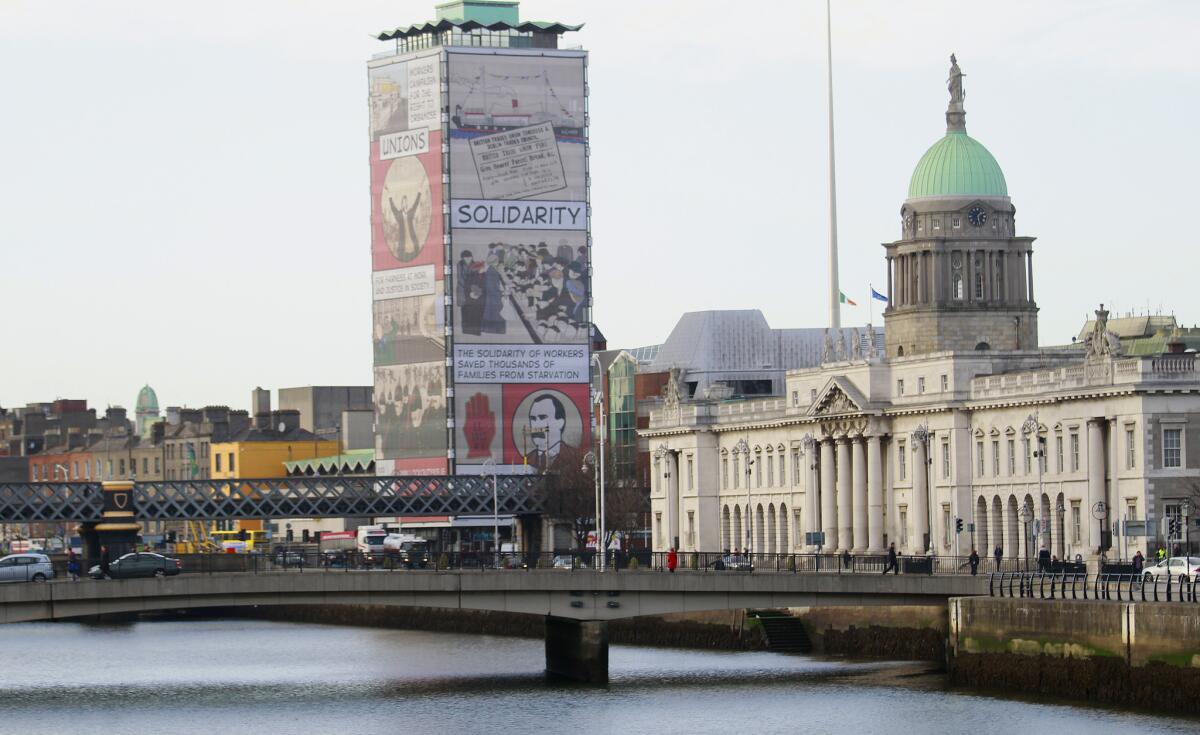Ireland first to emerge from financial bailout

LONDON – After three difficult years, Ireland is to emerge from its financial bailout program Sunday, the first nation to do so out of the five Eurozone countries that have had to seek rescue funds from international lenders.
But official relief at the end of Ireland’s reliance on emergency loans is tempered by the fact that it will continue to face deep government cuts in order to close a yawning budget gap and pay off its debt. State salaries and social services have been scaled back significantly during the last several years in an austerity drive that has left few of the nation’s 4.5 million people unaffected.
“This isn’t the end of the road,” Irish Finance Minister Michael Noonan told reporters recently. “This is a very significant milestone on the road, and it gives us an opportunity to pause and reflect for a very short period….But we must continue with the same types of policies, because the deficit is too high.”
Exiting the bailout program means that Dublin will return to the commercial markets to borrow money. Interest rates on Irish bonds have fallen to sustainable levels, enough that the government has chosen to forgo a precautionary line of credit offered by international lenders to smooth the transition.
With its economy picking up steam again, Ireland is being held up as an sign by European officials that the euro debt crisis, which came to close to torpedoing the common currency, has turned a corner. Officials say that their recipe of draconian budget cuts and economic reforms as the solution to the crisis has worked.
Yet the first bailed-out nation, Greece, remains in a parlous state, with more than a quarter of its workforce unemployed and its economy in deep depression. And struggling Portugal may have to seek a second rescue package next year.
Tiny Cyprus entered a bailout earlier this year after its banks began teetering, and Spain, too, has accepted rescue loans to shore up its banks, though of a much smaller size in proportion to its economy -- the Eurozone’s fourth-largest -- than in Ireland.
Ireland was forced to accept a $92-billion bailout in 2010 after the government took on the crippling debts of Irish banks, which had gone spectacularly bust when the country’s real-estate bubble burst. The tab pushed the size of the nation’s budget deficit to nearly a third of gross domestic product, a European record.
The gradual return to economic health has been fueled by advantages that some of the other bailed-out nations do not enjoy. Ireland boasts one of the lowest corporate tax rates in the world, which attracts foreign investment, and an educated, English-speaking talent pool. Even before the crisis, the Celtic Tiger was a strong exporter.
Also, after living beyond their means when credit was cheap, many Irish accepted the belt-tightening demanded by their rescuers, even if they grumbled about their country’s loss of sovereignty and submission to scrutiny by outside monitors. Public protests over austerity in Ireland have not been as frequent or violent as those in Greece.
The government has now built up a $27-billion reserve that will allow it to pay its bills through next year even if investors grow skittish again and shut Ireland out of the borrowing market through high interest rates.
henry.chu@latimes.com
More to Read
Sign up for Essential California
The most important California stories and recommendations in your inbox every morning.
You may occasionally receive promotional content from the Los Angeles Times.











